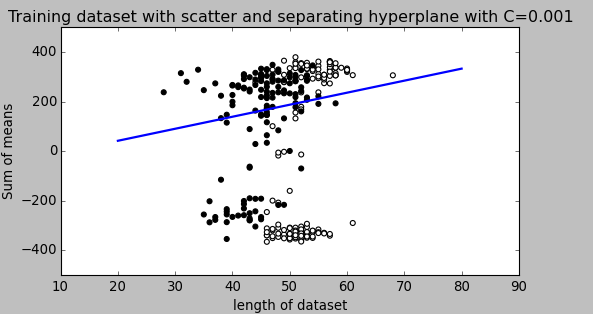In a SVM you are searching for two things: a hyperplane with the largest minimum margin, and a hyperplane that correctly separates as many instances as possible. The problem is that you will not always be able to get both things. The c parameter determines how great your desire is for the latter.
I have drawn a small example below to illustrate this. To the left you have a low c which gives you a pretty large minimum margin (purple). However, this requires that we neglect the blue circle outlier that we have failed to classify correct. On the right you have a high c. Now you will not neglect the outlier and thus end up with a much smaller margin.

So which of these classifiers are the best? That depends on what the future data you will predict looks like, and most often you don't know that of course.
If the future data looks like this:
 then the classifier learned using a large c value is best.
then the classifier learned using a large c value is best.
On the other hand, if the future data looks like this:
 then the classifier learned using a low c value is best.
then the classifier learned using a low c value is best.
Depending on your data set, changing c may or may not produce a different hyperplane. If it does produce a different hyperplane, that does not imply that your classifier will output different classes for the particular data you have used it to classify. Weka is a good tool for visualizing data and playing around with different settings for an SVM. It may help you get a better idea of how your data look and why changing the c value does not change the classification error.
In general, having few training instances and many attributes make it easier to make a linear separation of the data. Also that fact that you are evaluating on your training data and not new unseen data makes separation easier.
What kind of data are you trying to learn a model from? How much data? Can we see it?


 then the classifier learned using a large c value is best.
then the classifier learned using a large c value is best. then the classifier learned using a low c value is best.
then the classifier learned using a low c value is best.


